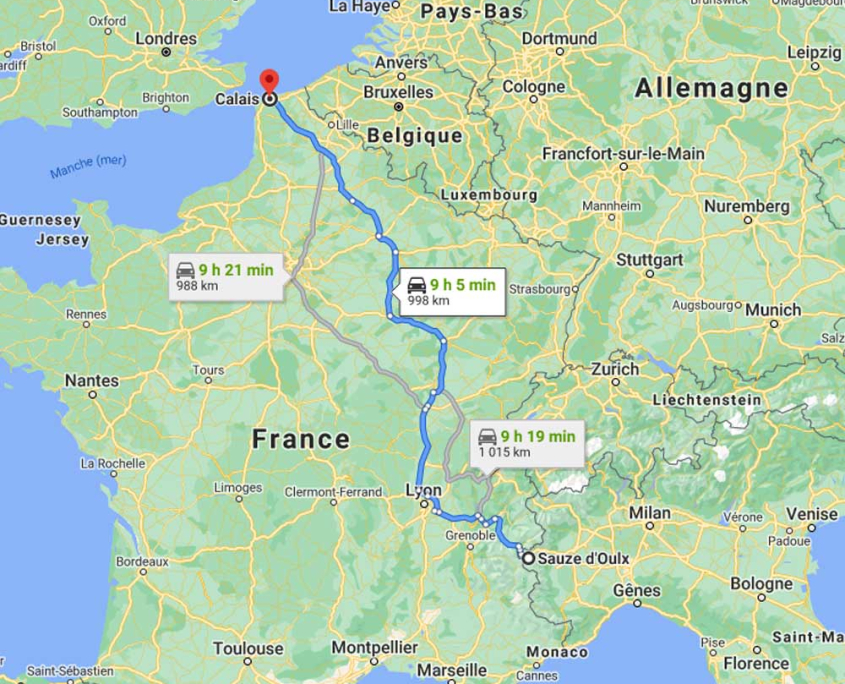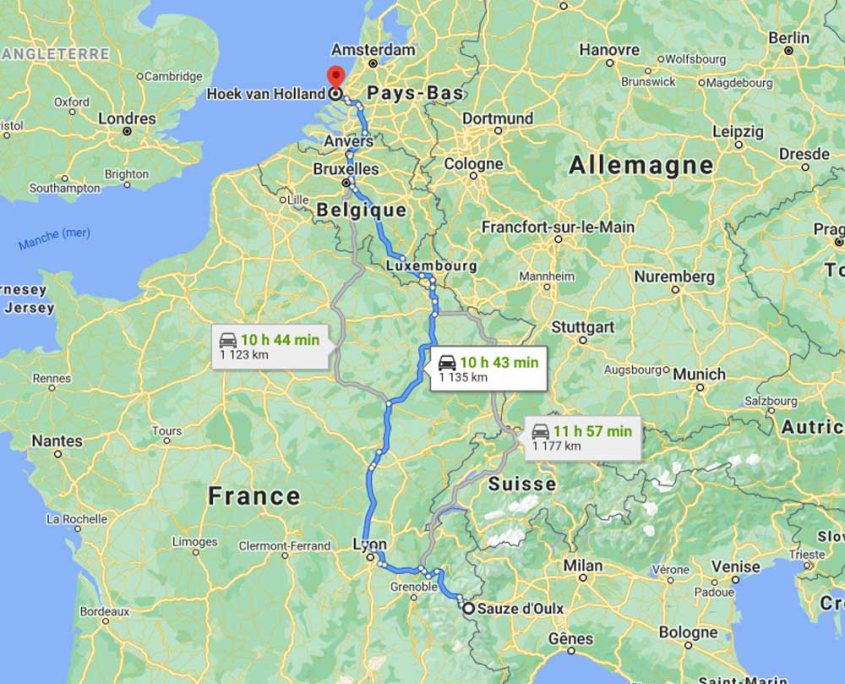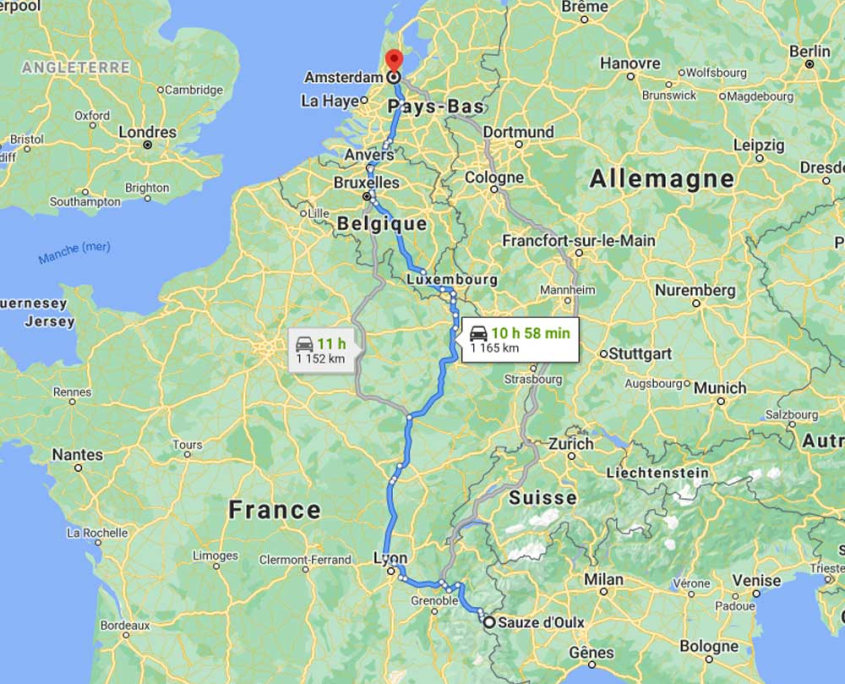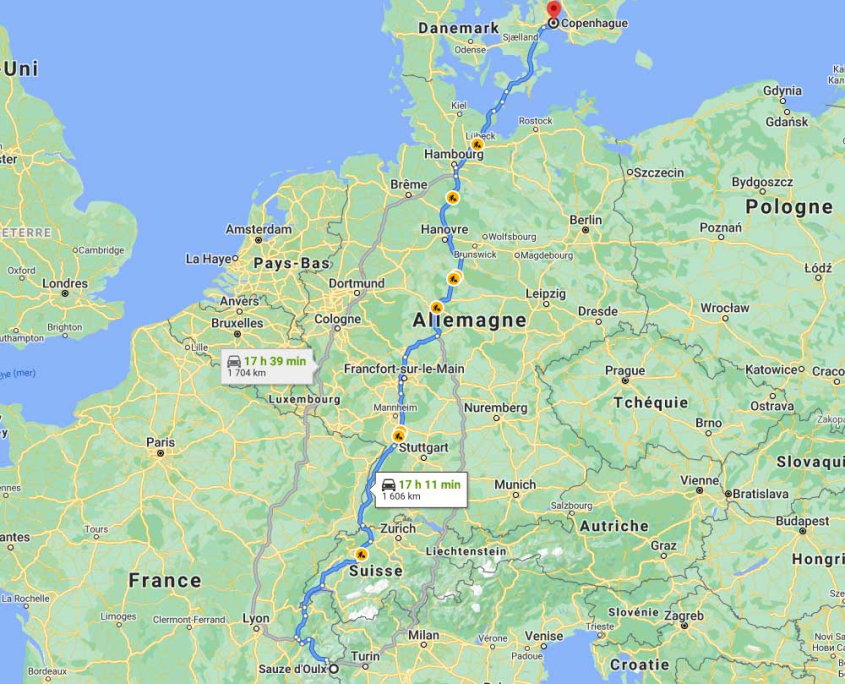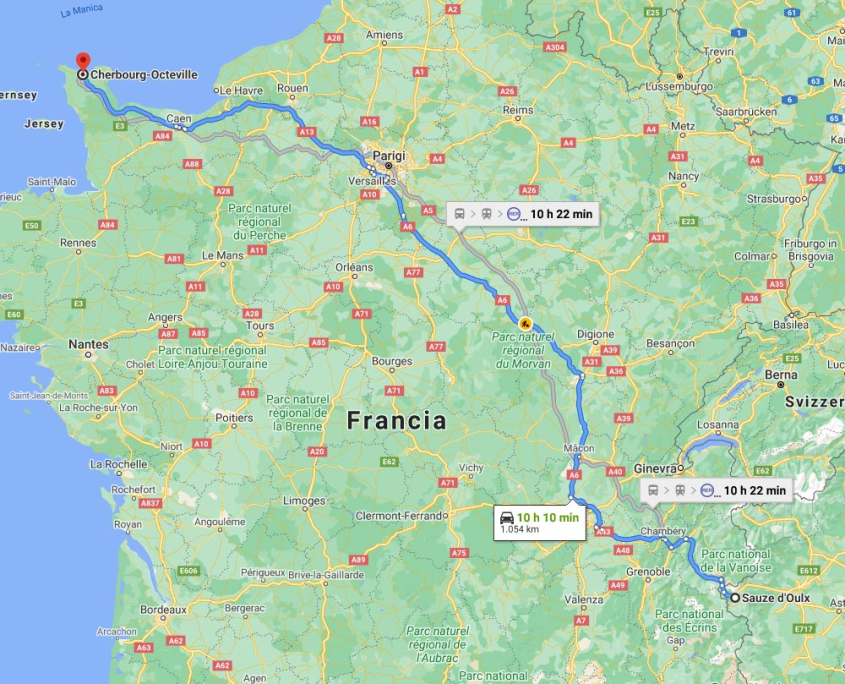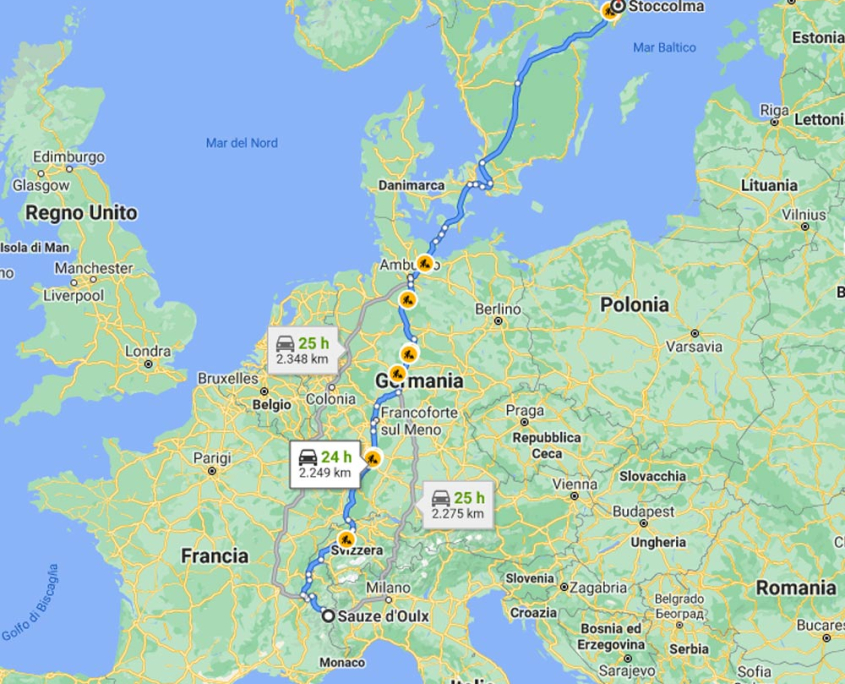Driving to Sauze d’Oulx
Driving to the Alps is well-trodden path for many winter and summer sports enthusiasts. Driving direct to Sauze d’Oulx can be the most convenient way to travel, even including an overnight stop en-route to make the most of your holiday and to arrive more relaxed.
The European motorway network connects to Oulx, the town below Sauze d’Oulx, via the E70 (A32).
It is obligatory to have either winter or all season tyres (with the snowflake symbol) when driving in the Alps in winter.
Always check current tolls and directions before you travel.
The centre of Sauze d’Oulx has a traffic limited zone (ZTL). You are only allowed through this is your hotel or apartment owner tells you. They will contact the local police to exempt your vehicle, allowing you to travel through the centre to your accommodation. If you don’t arrange this you will be fined.
Crit’Air Vignette
If you’re planning to drive in France on your way to Sauze d’Oulx it’s important that you get a Crit’Air vignette and understand where you’re allowed to go depending on the Euro classification of your vehicle.
About the Vignette
Crit’Air vignettes are used to identify a vehicle’s air pollutant emissions. The least polluting vehicles are generally allowed to circulate (be driven) more freely than those that emit more pollutants. A sticker covers the vehicle for its entire lifetime, and is based on the vehicle’s Euro emissions standard.
There are six categories in the Crit’Air vignette system. These range from green for the cleanest through to dark grey for the most polluting:
Crit’Air sticker categories
Crit’Air 0/E – for zero emission electric and hydrogen vehicles – green sticker
Crit’Air 1 – for plug-in hybrid vehicles and Euro 5, 6 petrol vehicles – purple sticker
Crit’Air 2 – for vehicles that conform to the Euro 4 petrol vehicles, and Euro 5, 6 diesel vehicles – yellow sticker
Crit’Air 3 – for vehicles that conform to the Euro 2, 3 petrol vehicles and Euro 4 diesel vehicles – orange sticker
Crit’Air 4 – for vehicles that conform to the Euro 3 diesel vehicles – burgundy sticker
Crit’Air 5 – for vehicles that conform to the Euro 2 diesel vehicles – dark grey sticker
About the Crit’Air System
The system was introduced by the French government as a way to reduce harmful vehicle emissions in areas where air quality is poorest, such as larger towns and cities.
In these areas, certain vehicles can be refused entry based on the Crit’Air sticker displayed on the windscreen – either all the time or on certain days where air pollution levels are dangerously high.
There are currently two different types of government-defined low emissions zones in France:
- Permanent low-emission zones (known as ZCR – Zone à Circulation Restreinte)
- Temporary emergency low-emissions zones (known as ZPA – Zone de la Protection de l’Air)
In addition, certain French towns and cities now have emergency schemes that can restrict certain vehicles in the event of particularly high pollution.
If driving in any of these zones, a Crit’Air sticker should be affixed to the right-hand side of the car’s windscreen and should be clearly visible at all times.
Do I need a Crit’Air vignette?
All eligible vehicles need to display a Crit’Air vignette on their windscreen to be able to drive and park in restricted traffic zones, such as permanent low-emissions zones and emergency low-emissions zones.
Not all vehicles are eligible for the vignettes. Cars registered before January 1997 and motorbikes and scooters registered before June 2000 are ineligible, and cannot be driven at all where restrictions apply.
French emergency low emission zone (ZPA)
As opposed to ZCRs, emergency low emissions zones (known as ZPAs) are temporary restrictions imposed on certain vehicles. These are implemented in certain locations when there is a risk of dangerously high air pollution levels.
These areas tend to be significantly larger than the permanent zones, and all vehicles must display a vignette when public announcements dictate that restrictions are in place, or face a fine.
There are currently 28 areas where emergency low emission zones are implemented during certain conditions:
France ZPA zones
- Paris
- Annecy
- Chambery
- Arve Valley
- Côte d’Or/Dijon
- Creuse/Guéret
- Deux-Sèvres/Niort
- Drôme/Valence
- Eure-et-Loir/Chartres
- Gers/Auch
- Gironde/Bordeaux
- Grenoble
- Haute-Savoie/Annecy
- Hérault/Montpelier
- Isère/Grenoble
- Lille
- Loiret/Orléans
- Lyon
- Maine-et-Loire
- Marseille
- Puy-de-Dome/Clermont Ferrand
- Pyrénées-Atlantiques
- Rennes
- Savoie/Chambery
- Strasbourg
- Toulouse
- Vendée/La Rouche-sur-Yon
- Vienne/Poitiers
However, this situation could change quickly as more cities and departments introduce low-emission zones in response to weather conditions, so check the Urban Access Regulations website before setting off.
A Few Sample Routes
These routes and route pricing have been compiled with the use of Via Michelin, Google Maps, Sanef Autoroutes and SFTRF.
Prices change and errors can always occur, so always check before you travel!
Calais to Sauze d’Oulx
Calais, France, to Sauze d’Oulx, Italy
Time (approx): 9h+ (Google map directions)
Tolls (2024): €103.30 (view autoroute tolls)
Frejus Tunnel Toll: €54.10 (view details)
Dunkirk to Sauze d’Oulx
Dunkirk, France, to Sauze d’Oulx, Italy
Time: (approx): 9h+ (Google map directions)
Tolls: (2024): €97.70 (view autoroute tolls)
Frejus Tunnel Toll: €54.10 (view details)
Le Havre to Sauze d’Oulx
Le Havre, France, to Sauze d’Oulx, Italy
Time: (approx): 8-9h (Google map directions)
Tolls: (2024): €93.70 (view autoroute tolls)
Frejus Tunnel Toll: €54.10 (view details)
Roscoff to Sauze d’Oulx
Roscoff, France, to Sauze d’Oulx, Italy
Time (approx): 11h+ (Google map directions)
Tolls: (2024): €97.90 e/w (view autoroute tolls)
Frejus Tunnel Toll: €54.10 (view details)
Rotterdam to Sauze d’Oulx
Rotterdam, Netherlands, to Sauze d’Oulx, Italy
Time (approx): 11h+ (Google map directions)
French Tolls (2024): €63.60 (view autoroute tolls)
Frejus Tunnel Toll: €54.10 (view details)
Amsterdam to Sauze d’Oulx
Amsterdam, Netherlands, to Sauze d’Oulx, Italy
Time (approx): 11h+ (Google map directions)
French Tolls (2024): €63.60 (view autoroute tolls)
Frejus Tunnel Toll: €54.10 (view details)
Copenhagen/Malmo to Sauze d’Oulx
Copenhagen and Malmo, Sweden to Sauze d’Oulx, Italy
Time (approx): 17h+ (Google Maps Directions)
Tolls (2024): €89.93 (view autoroute tolls)
Swiss Motorway Tax: (included in tolls)
Frejus Tunnel Toll: €54.10 (view details)
Oslo to Sauze d’Oulx
Oslo, Norway, to Sauze d’Oulx, Italy
Time (approx): 23h+ (Google map directions)
Tolls (2024): €151.00 (view autoroute tolls)
Swiss Motorway Tax: (included in tolls)
Frejus Tunnel Toll: €54.10 (view details)
Cherbourg/ Caen to Sauze d’Oulx
Cherbourg/Caen, France, to Sauze d’Oulx, Italy
Time (approx): 10h+ (Google map directions)
Tolls (2024): €93.00 (view autoroute tolls)
Frejus Tunnel Toll: €54.10 (view details)
Stockholm to Sauze d’Oulx
Stockholm, Sweden, to Sauze d’Oulx, Italy
Time (approx): 25h+ (Google map directions)
Tolls (2024): €153.90 (view autoroute tolls)
Frejus Tunnel Toll: €54.10 (view details)
Ferries
Ferries from the UK and Ireland to France and Holland, along with Norway to Denmark, can be viewed by going to the ferry companies websites or by using a company that shows a variety of crossings and prices like aFerry (below).
Dover – Calais/ Dover – Dunkirk
Folkestone – Calais
Portsmouth – Le Havre / Plymouth – Roscoff
Newcastle – Amsterdam
Hull – Rotterdam
Dublin – Cherbourg
Hirtshals – Larvik
Harwich – Hook of Holland


